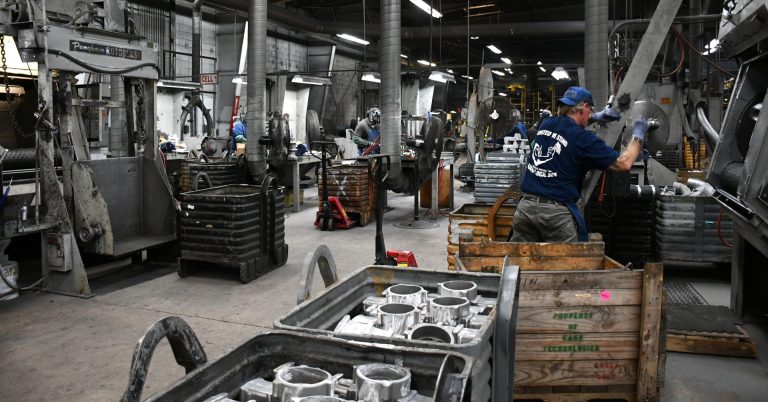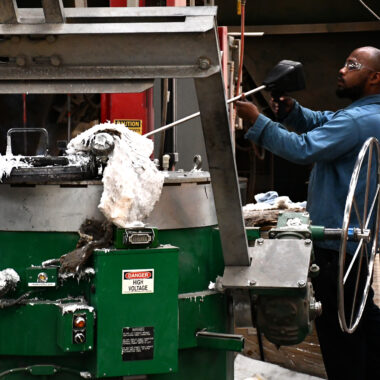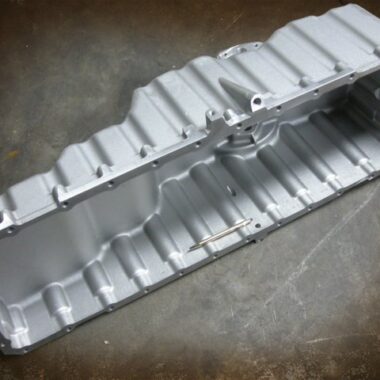Mastering Light Weight Aluminum Spreading: a Deep Study the Numerous Methods Offered
From the conventional method of sand casting to the facility processes of financial investment spreading and pass away casting, each method provides distinct difficulties and benefits. In this exploration of aluminum casting strategies, we will shed light on the ins and outs of each approach, offering understandings that could transform your technique to aluminum casting.

Sand Casting Technique Summary
The Sand Casting technique's convenience and extensive application make it a cornerstone in grasping aluminum casting procedures. This technique entails producing a mold and mildew from a mix of sand and a binder, such as clay, to create complex shapes for casting liquified light weight aluminum. Sand casting is a preferred choice as a result of its fairly inexpensive, ease of alteration, and capability to generate intricate geometries with high precision.
The procedure begins with the creation of a pattern, typically made of wood or metal, which is pressed into the sand to produce a mold tooth cavity. When the pattern is gotten rid of, the mold dental caries is loaded with liquified aluminum, which solidifies to take the form of the pattern. After cooling down and solidification, the sand mold is damaged away, revealing the aluminum casting.
Sand spreading is widely made use of in different industries, including auto, aerospace, and manufacturing, because of its versatility in producing both little and huge aluminum elements (aluminum casting). Its flexibility to intricate styles and cost-effectiveness make it a recommended selection for lots of aluminum casting applications
Long-term Mold And Mildew Casting Refine Explained
Exploring the complexities of aluminum casting, the Long-term Mold Casting procedure uses a polished approach for developing high-grade parts with accuracy and performance. Unlike sand spreading, long-term mold casting makes use of a multiple-use mold normally made of steel or iron to shape the molten light weight aluminum.
Long-term mold and mildew casting can be categorized right into two main types: gravity spreading and low-pressure casting. Gravity casting entails pouring the liquified metal right into the mold and mildew utilizing gravity, while low-pressure spreading uses low stress to fill up the mold dental caries. Both methods supply advantages in terms of lowering porosity and improving mechanical residential properties.
Die Casting: Advantages and Negative Aspects
Understanding the complexities of die spreading entails understanding its distinctive advantages and drawbacks in the world of aluminum element manufacturing. One vital advantage is the high-speed production ability of die spreading, allowing for the mass production of complicated forms with limited tolerances.
The procedure is not as versatile when it comes to create modifications compared to other casting methods like sand spreading. Regardless of these limitations, the benefits of die spreading often outweigh the downsides, making it a recommended choice for lots of aluminum casting applications.
Investment Casting Applications and Benefits
Building on the advantages of die casting, investment spreading uses a versatile method for aluminum casting producing intricate light weight aluminum components with unique advantages in various applications. Investment spreading, also recognized as lost-wax casting, masters developing complicated shapes that would certainly be impossible or hard to accomplish through various other methods. This technique is widely made use of in markets such as aerospace, automobile, and jewelry production.
One of the crucial benefits of financial investment casting is its capacity to produce near-net form parts, lessening the need for added machining and decreasing product waste. This results in expense savings and faster manufacturing times compared to traditional machining procedures. Additionally, investment spreading enables the production of parts with outstanding surface coatings and limited tolerances.
In the aerospace market, Continue financial investment casting is preferred for its capacity to produce lightweight yet solid parts important for aircraft efficiency. The auto sector benefits from investment casting for creating parts with high dimensional precision and intricate styles. On the whole, investment casting provides a economical and exact remedy for making intricate aluminum parts across different markets.

Lost Foam Casting: Just How It Works
Shed foam spreading, also called evaporative-pattern casting, is an approach for creating detailed steel components by using foam patterns that evaporate during the spreading process. This method starts with a foam pattern of the preferred component being placed right into unbonded sand. The foam pattern is generally coated with a refractory product to improve the surface coating of the final metal part. When liquified steel is poured right into the mold, the foam vaporizes as a result of the warm, leaving behind a tooth cavity that is then loaded by the metal.
One of the crucial benefits of shed foam casting is its capability to create intricate forms with elaborate details that may be challenging to accomplish with various other casting approaches. Additionally, the process can be economical directory as it gets rid of the demand for cores and allows for the loan consolidation of numerous components right into a solitary component. Nonetheless, it calls for mindful control of the procedure specifications to make certain correct foam evaporation and metal flow.
Verdict
Finally, grasping aluminum casting includes understanding and making use of different methods such as sand casting, permanent mold and mildew casting, pass away spreading, investment casting, and shed foam casting. Each technique has its very own benefits and applications in the manufacturing procedure. By acquainting oneself with these various approaches, makers can choose one of the most appropriate casting method for their particular needs and needs, eventually resulting in reliable and successful production of light weight aluminum components.
From the typical method of sand spreading to the complex procedures of investment spreading and die spreading, each method presents special challenges and advantages. In this expedition of aluminum spreading techniques, we will certainly lose light on the ins and outs of each method, supplying insights that might revolutionize your approach to light weight aluminum casting.
